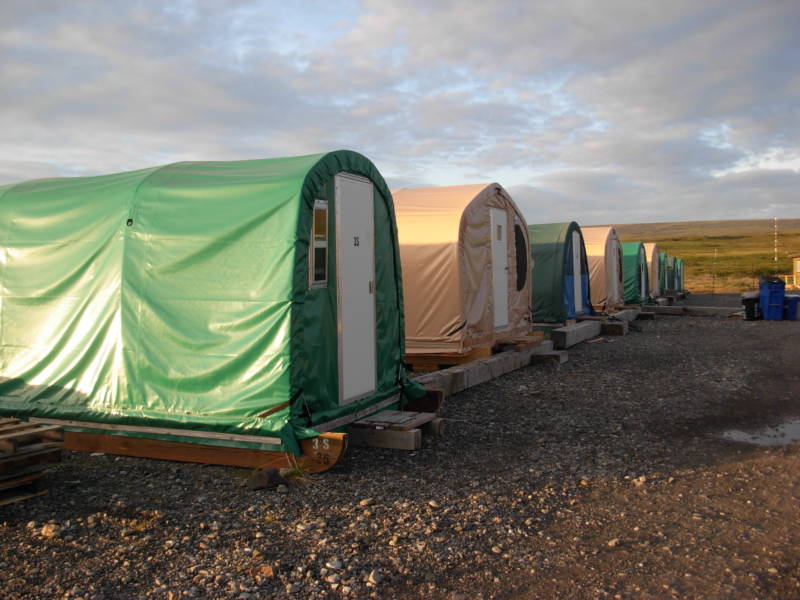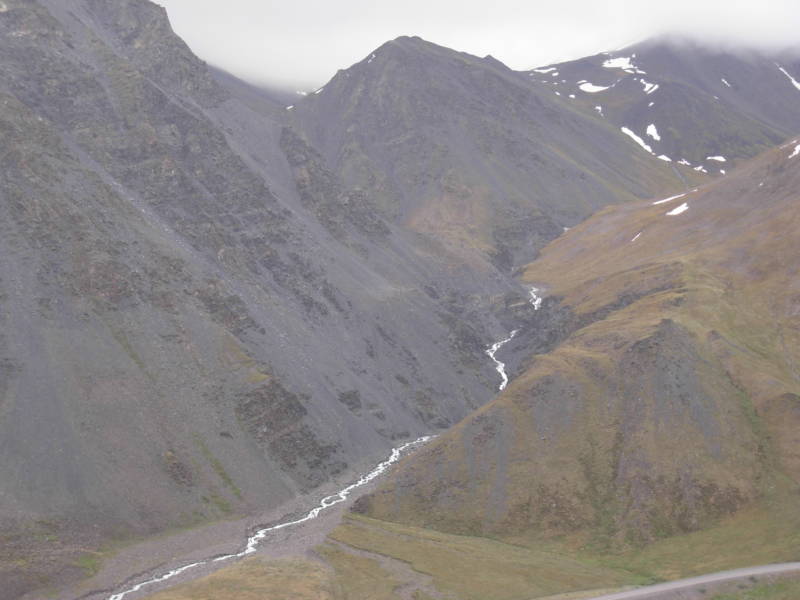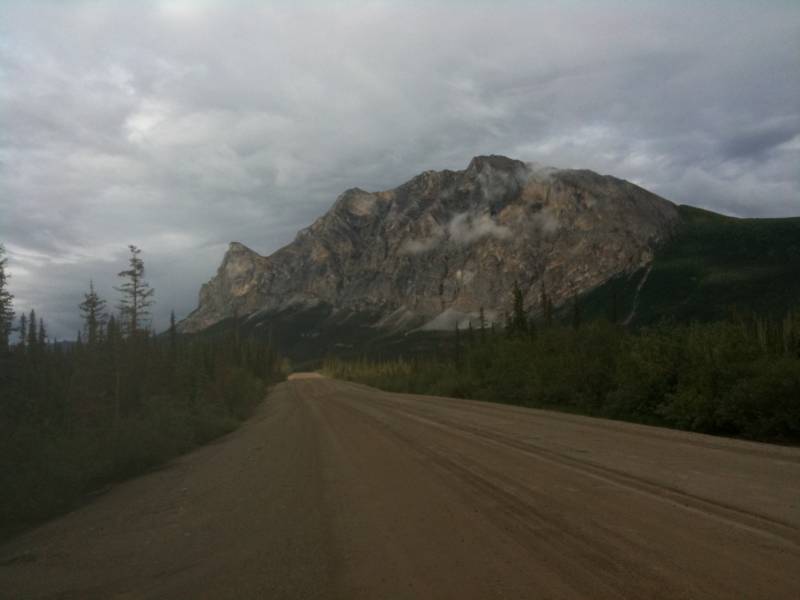
Naively, I thought Alaska’s “Haul Road” would be smooth. For some reason, I’d pictured the 414-mile route that runs north, from near Fairbanks, to Deadhorse, near Prudhoe Bay, to be a picture of modern asphalt-laying engineering, and that, during our 350-mile drive to Toolik Field Station, I would be able to catch up on some of the sleep I’d been missing after two nights in a University of Fairbanks dorm room (think college students on summer break in a place where the sun barely sets). After all, this is the road that tracks the Trans-Alaska Pipeline, connecting the largest oil field in North America (which happens to be operated by BP) to the rest of the continent.
As it turns out, I was heartbreakingly wrong. Roughly a quarter of the road, which is officially called the Dalton Highway, is paved. And the paved parts are actually the worst. Between the frost heaves caused by the alternate freezing and thawing of the ground, and those Ice Road Trucker tires chewing up the road, driving the Haul Road is more like an amusement park ride, at least from the back seat of a 15-person van. Suffice it to say that I did not catch up on any sleep during the ride, which turned out to be a good thing, because the second half of this ride was through some of the most beautiful country I have ever seen.

About 70 miles north of Coldfoot, one of the three “towns” along the road, and 120 miles north of the Arctic Circle, we passed a sign marking the “Farthest North Spruce Tree.” It actually wasn’t the farthest north spruce tree we saw, and also, it was dead, but right around there was where we crossed the treeline, leaving behind the white and black spruces stunted from extreme temperatures, and crossed into the tundra.
Back in Fairbanks, over breakfast (reindeer sausage), a biologist named Andi Lloyd had talked about her research on the treeline in Alaska. There’s a lot of evidence showing that climate in the Arctic is changing faster than any place on Earth. Here, mean winter temperatures have climbed between six and eight degrees F since 1960, and in summer, between two and three, said Lloyd. This change is affecting how the boreal forest is expanding, she said, and causing the treeline to move north. In some places, such as the Seward Peninsula, Lloyd says it has moved ten kilometers (six miles) in the last century. “The Arctic is changing faster than we can study it,” said Lloyd.
But the relationship between climate change and the forest is not as simple as warmer temperatures equal northern expansion. Rising temperatures also mean a drier environment, said Lloyd, as precipitation in the region has not increased as much as temperatures, and more warmth means more evaporation. Lloyd and others have found that trees in the boreal forest are increasingly drought-stressed, which means they are growing much slower than they did in the mid 1900s, and that they are more vulnerable to insect infestation.
“I had a naive idea that the temperature controlled everything, but then I had a dawning awareness that the boreal forest is a moisture-limited forest,” she said.
There are no trees here at Toolik Station, where I will be for the next two weeks talking to scientists about the changing Arctic. The camp is nestled on the shore of Toolik Lake, in the northern foothills of Alaska’s Brooks Range. During the time I am here, the population of the camp will be about 140 people. We arrived at 10 p.m., after 13 hours of driving, and the sun was still high in the sky. It was still up there casting shadows when I awoke at 2:30 a.m. At breakfast time, however, camp is encased in fog, and the temperature is about 45 degrees–kind of feels like I never left San Francisco.
Climate Watch associate producer Gretchen Weber is spending two weeks at Toolik Station, as a Logan Polar Science Fellow.

4 thoughts on “Field Notes from the Arctic: The Journey North”
Comments are closed.

Fascinated by you field notes. Look forward to more.
I’m a friend of Donie’s who left on the Toolik Taxi on your first Monday. I was at the beer introduction thingee in the back but raised no questions (we are a different funding agency). Email me for contacts in the Bay Area climate community. Didn’t see you at meals unlike several of other other journalists; you can find my photo in the plastic baggie under Lab 2 for the departed.
“Here, mean winter temperatures have climbed between six and eight degrees F since 1960, and in summer, between two and three,” said Lloyd.
What is the source for these figures?
Lloyd was interpreting the findings in the 2005 Arctic Climate Impact Assessment Report, which you can access here: http://www.acia.uaf.edu/pages/overview.html.